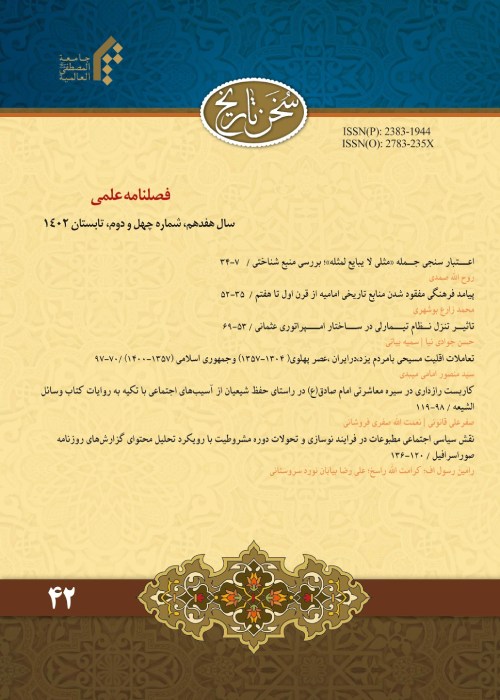Safavid Iranian customs in the view of Jean Chardin
The Safavid period (1357-1907 AH) is one of the most durable and prominent periods in the history of Iran in the Islamic period due to the revival of the political authority of the government and the strengthening of the foundations of the Iranian government. This period marked the beginning of a new period in trade relations and ambassadors' travel to Iran due to international developments and geographical discoveries made by Westerners. Therefore, the process of developments and trade relations between Iran and Western countries, provided a platform for many tourists, including Chardin (1664) to travel to Iran. Among the tourists who traveled to Iran during the Safavid period, Chardin's works have special importance; Therefore, considering the importance of Safavid Iranian customs as one of the important elements of Iranian culture, this study, while examining the important examples of Safavid Iranian customs in Chardin's travelogue, seeks to answer this question: What are the aspects of Chardin's attitude in examining the origin and development of Safavid Iranian customs? Using Chardin's travelogue, the present study has classified and analyzed the customs of Safavid Iranians in two national and religious areas and examined the characteristics of Chardin's view in this field. The findings of the present study indicate that the characteristics of Chardin's attitude about the customs of Iranians in the Safavid period, based on the analysis and comparison of the above with the components of cultural elements and specifically the customs of contemporary European society in this period. (11th century AH) / Seventeenth AD) In addition, it has been determined that in Chardin's studies and attitudes about the national and religious customs of Iranians, factors such as the culture and civilization of ancient Iran, the teachings of Islam and the climatic conditions, have been influential in the formation and continuation of customs.
- حق عضویت دریافتی صرف حمایت از نشریات عضو و نگهداری، تکمیل و توسعه مگیران میشود.
- پرداخت حق اشتراک و دانلود مقالات اجازه بازنشر آن در سایر رسانههای چاپی و دیجیتال را به کاربر نمیدهد.




